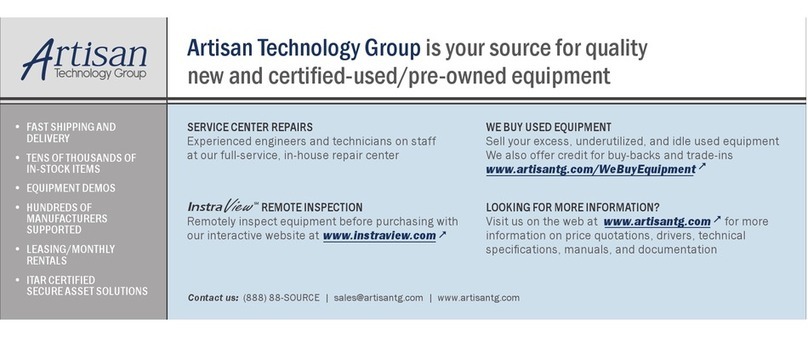
500-003111-000
vi
TABLE OF CONTENTS (Continued)
Page
SECTION 4. PROGRAMMING
4.1 INTRODUCTION TO CONTROLLING THE VMIVME-3111 BOARD...4-1
4.2 CONTROL AND STATUS REGISTER DESCRIPTIONS.....................4-2
4.3 INITIALIZATION...................................................................................4-5
4.4 ANALOG INPUT MODES.....................................................................4-5
4.5 ACCESSING THE ANALOG INPUT CHANNELS................................4-6
4.5.1 Gain Selection......................................................................................4-6
4.5.2 Channel Selection ................................................................................4-7
4.5.3 Gain and Channel Selection Precedence.............................................4-8
4.6 CONTROLLING AND READING THE ADC.........................................4-9
4.6.1 ADC Timing..........................................................................................4-9
4.6.2 ADC Controls and Flags.......................................................................4-9
4.6.3 Reading ADC Codes............................................................................4-15
4.6.4 External Trigger Operation...................................................................4-17
4.7 CONTROLLING THE ANALOG OUTPUTS .........................................4-17
4.7.1 Writing to Outputs.................................................................................4-17
4.7.2 Off-Line Operation................................................................................4-18
4.8 SELF-TESTING THE VMIVME-3111 BOARD......................................4-18
4.8.1 Loopback Testing of Inputs and Outputs..............................................4-19
4.8.2 Calibration Self-Testing........................................................................4-22
4.8.3 Performing Autocalibration...................................................................4-25
4.9 BUS INTERRUPT CONTROL..............................................................4-25
4.9.1 Interrupt Control Register.....................................................................4-26
4.9.2 Interrupt Vector Register ......................................................................4-27
4.10 BOARD IDENTIFICATION REGISTER................................................4-28
SECTION 5. CONFIGURATION AND INSTALLATION
5.1 UNPACKING PROCEDURES..............................................................5-1
5.2 PHYSICAL INSTALLATION.................................................................5-1
5.3 BEFORE APPLYING POWER: CHECKLIST......................................5-1
5.4 OPERATIONAL CONFIGURATION.....................................................5-2
5.4.1 Factory-Installed Jumpers....................................................................5-2
5.4.2 Board Address and Address Modifier Selection...................................5-6
5.4.3 Analog Input Voltage Range Selection.................................................5-7
5.4.4 Current Loop Termination Resistors.....................................................5-7
5.4.5 Differential/Single-Ended Input Mode Selection...................................5-7
5.4.6 Analog Output Voltage Range Selection..............................................5-7
5.5 CALIBRATION .....................................................................................5-8
5.5.1 Equipment Required.............................................................................5-8
5.5.2 Internal Reference Voltage Calibration.................................................5-10
5.5.3 Programmable Gain Amplifier (PGA) Calibration .................................5-10
5.5.3.1 Voltage Input Option Calibration...........................................................5-10
5.5.3.2 Current Input Option Calibration...........................................................5-11
5.5.4 Manual ADC Calibration.......................................................................5-12
5.5.5 Analog Outputs Calibration...................................................................5-13
Artisan Technology Group - Quality Instrumentation ... Guaranteed | (888) 88-SOURCE | www.artisantg.com





























